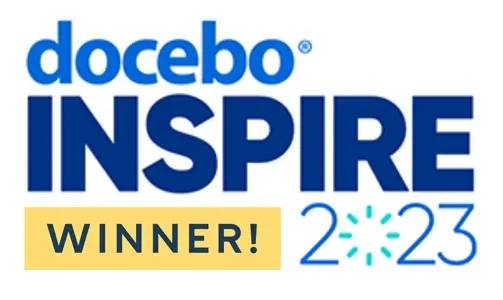Gamification in education online is transforming the way we learn, blending traditional learning with the engaging elements of video games. This approach uses points, levels, and rewards to make educational activities more exciting and interactive. It's becoming increasingly popular, with a significant number of online education platforms incorporating game-based elements into their teaching strategies to capture and maintain student interest. Let’s explore how gamification is making education more dynamic and effective in a digital age.
Gamification Meaning
Gamification means using game-like elements in activities that aren't games to make them more fun and engaging. For example, in education, adding points, badges, or competitions to learning can help make it more interesting and motivate students to do better. It takes the fun parts of playing a game and uses them to enhance activities like learning or working.
Top Benefits of Gamification in Education
Benefit 1: Increases Engagement
Gamification significantly boosts student engagement. By integrating points and leaderboards into educational activities, students are naturally drawn into the learning process. These game-like elements leverage competition and achievement, which are great motivators. As students earn points for their efforts and see their names climb up the leaderboards, they tend to engage more deeply with the material. This makes the learning experience not only more interesting but also more interactive, helping students stay focused and involved.
Benefit 2: Boosts Motivation
Gamification is also key in enhancing student motivation. Incorporating game mechanics like levels and rewards sets clear, manageable goals for students. Achieving these goals provides immediate gratification and a sense of progress, which keeps students motivated. For instance, earning a badge for completing a difficult chapter can make students feel accomplished and encourage them to tackle the next challenge. This approach helps maintain a high level of enthusiasm and commitment throughout the learning process.
Benefit 3: Enhances Retention Rates
Gamification in education isn’t just engaging; it also significantly enhances how well students retain information. Interactive elements like quizzes, simulations, and real-time problem-solving that are built into gamified learning make the material stickier in a student’s memory. This approach contrasts with traditional rote learning, where students might quickly forget details after a test. By actively participating and making decisions in a gamified environment, students create stronger connections with the content, leading to better long-term retention.
Benefit 4: Promotes Continuous Learning
Gamification naturally encourages students to keep learning and improving. With levels to conquer and challenges to overcome, there's always a next step to aim for. This structure not only makes learning more exciting but also helps students develop a habit of continuous self-improvement. Each new level or challenge is designed to build on the previous ones, ensuring that students are constantly applying and expanding their knowledge. This progressive learning model fosters a lifelong learning mindset, crucial in today’s ever-evolving world.
Benefit 5: Provides Instant Feedback
Gamification helps students understand quickly what they've learned and what they still need to work on. In a gamified environment, when students complete a task or answer a question, they get immediate feedback. This could be seeing their score increase, getting a virtual badge, or moving to the next level. This instant response lets them know right away if they’re on the right track or need to adjust their approach, making their learning process smoother and more effective.
Benefit 6: Encourages Cooperative Learning
Gamification often involves games where students need to work together. This could mean teaming up to solve puzzles, answer questions, or complete projects. Playing these multiplayer games not only makes learning more fun but also teaches important skills like teamwork and communication. Students learn to listen to each other, share their ideas, and work towards a common goal, all of which are valuable skills in school and beyond.
Benefit 7: Makes Learning Fun
Turning learning into a game can make education much more enjoyable. By using elements like scoring, achievements, and interactive challenges, gamification transforms traditional learning methods into an exciting game. This fun approach helps students relax and reduces their fear of making mistakes. When students are less afraid of failing, they're more likely to try new things and explore different solutions, which is a fantastic way to learn.
Benefit 8: Customisable Learning Experiences
Gamification also allows for customisable learning experiences. It adapts to the pace and preferences of each student, offering a more personalised approach to education. Whether a student needs more time to grasp a concept or seeks more challenges, gamified learning can adjust accordingly. This flexibility helps ensure that every student has a learning path that fits their needs, helping them achieve their best results.
Benefit 9: Accessible Learning Materials
Another great advantage of gamification is that it makes learning materials more accessible. Many gamified learning platforms are available on various devices, including smartphones, tablets, and computers. This accessibility means students can engage with their studies anytime and anywhere, whether they're on a bus, at a cafe, or at home. It's a convenient way to make sure learning can happen on the go.
Benefit 10: Tracks Progress
Finally, gamification platforms are excellent at tracking progress. They provide detailed analytics that show both students and teachers how well the students are doing. This can include which areas they excel in and where they might need more help. Having access to such data helps teachers tailor their instruction and gives students insights into their own learning process, enabling a more targeted and effective educational experience.
What is Gamification in Education?
Gamification in online education uses game-like elements to make learning more engaging and effective. By integrating strategies such as scoring points, competing with others, and earning badges into educational activities, this approach makes lessons fun and interactive.
What makes it even more exciting is the role of AI and software. These technologies customise the learning experience by adapting challenges and feedback to fit each student's needs. AI algorithms can analyse a student’s progress and preferences, offering tailored tasks that keep them challenged just enough to stay motivated without feeling overwhelmed. This smart use of software ensures that gamification isn’t just a one-size-fits-all solution, but a dynamic and responsive way to learn.
Kickstart Your Career in Creating Gamified Education
Interested in a creative career where you can design engaging educational experiences? With Online Courses Australia, you can dive into a world of opportunities. We offer a diverse range of AI and software courses that equip you with the skills to innovate and create using popular creative suites like Adobe and Illustrator, which can help you kickstart a career in video game design.
Learn how to blend technology and creativity to develop gamified learning tools that make education both fun and effective. Whether you're looking to enhance existing skills or start a new career path, our courses are designed to help you succeed.
Start your journey with us today and transform the way we learn!
Gamification in Education FAQs
How do I get started in gamification?
The best way to start in gamification is to understand the fundamentals of design. An online graphic design course or an Adobe Illustrator course can be the perfect first step. These courses will teach you about design principles, colour theory, and typography, all of which are crucial for creating visually appealing and engaging game elements. Learning how to use tools like Adobe Illustrator will also help you craft the aesthetic components of gamified systems, such as badges, leaderboards, and icons. Once you have these skills, you'll be better equipped to apply them to gamification projects.
Can I become a game designer with online education?
Absolutely! Starting with online courses in graphic design or Adobe Illustrator can lay a strong foundation for a career in game design. These courses not only teach you essential design skills but also allow you to become proficient with industry-standard software used in game design. As you advance, you can take more specialised courses in game mechanics and user experience to complement your design skills. This comprehensive approach through online education will prepare you to enter the field as a well-rounded game designer.
What is an example of gamified learning?
An example of gamified learning can be found in an online course designed to teach a subject like coding or maths through interactive challenges and rewards. For instance, consider a coding platform where learners progress through different levels by solving coding problems. As they succeed, they earn points or digital badges, unlock new challenges, and can see their name climb up a leaderboard.
Read more:
- Career Development





















